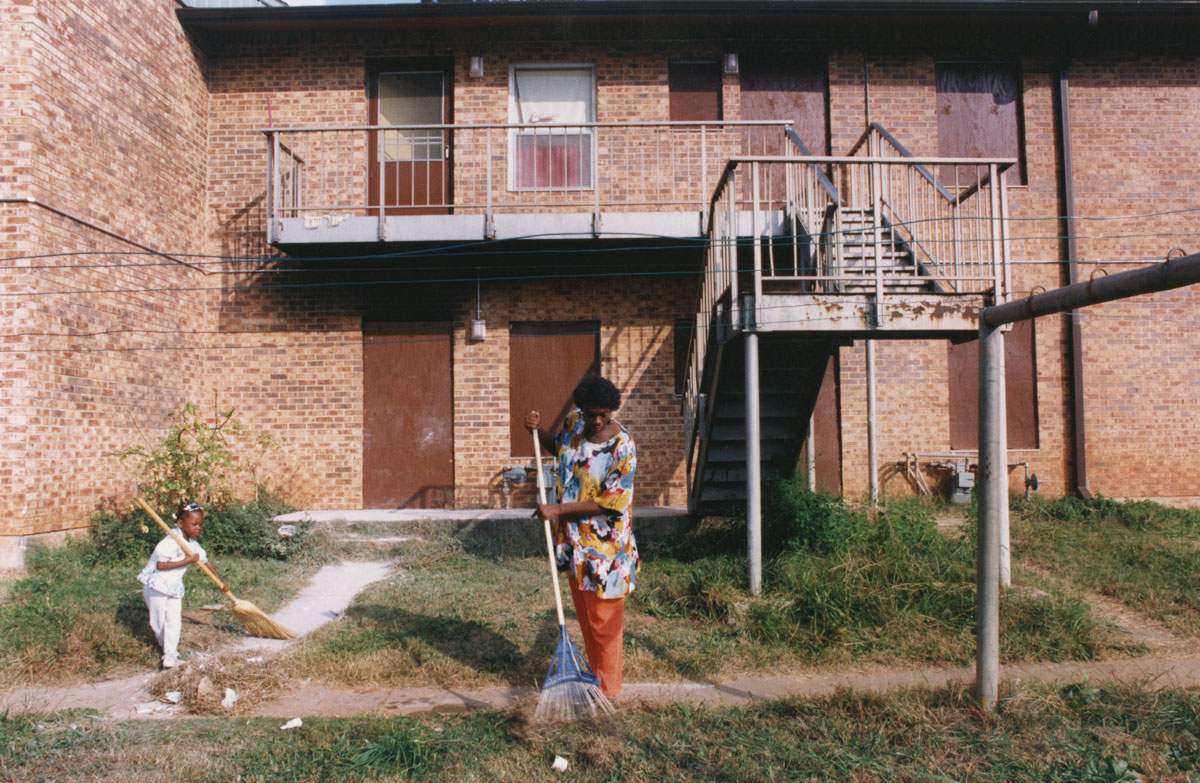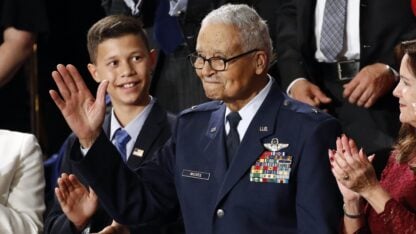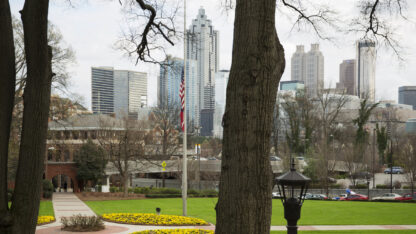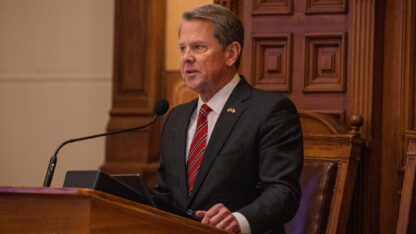After the Atlanta Housing Authority tore down the East Lake Meadows housing project at the end of the 1990s, it was replaced with a mixed-income development called The Villages of East Lake. “East Lake Meadows: A Public Housing Story” is a new documentary directed by Sarah Burns and David McMahon that tells the stories of former residents.
“We quickly recognized just telling the story of the new community was really incomplete,” said Burns. “We wanted to focus our story on the community that was there before.”
McMahon adds that other accounts of what happened in East Lake tend to look at the positive outcomes that came to the community after redevelopment.
“It felt to us as though there was a group of people whose perspective on what happened had often been overlooked in these accounts. And they proved to be the life-blood of the story,” said McMahon.
Burns explains that finding former residents was a process that took about a year and included hiring a private investigator. It began with a video clip made by children who attended East Lake Elementary and were documenting their neighborhood for an after school video club.
“We tracked down the teacher, and we actually hired a private investigator to help us find phone numbers for the kids, now adults, but these kids who had participated in this project and we found them,” said Burns.
It was important to the filmmakers to include perspectives from a range of residents living at the housing project.
“We wanted people across generations and across decades,” said Burns.
Aseelah Muhammad is a former resident of the East Lake Meadows Housing Project who was interviewed in the documentary. She said that when she moved in at the beginning of the 1990s the violence had slowed, but there were still shootings and drug dealing. In the film, she recounts a shooting that occurred the day she and her children moved in.
“The first day that we moved in and not long after we had moved in and started getting settled in, the people that we knew that was up under the steps playing craps—one of the people had got killed, had got shot,” Muhammad remembered.
Despite violence, drugs and terrible housing conditions the film highlights the sense of community many residents felt living in the project. In many ways, this was thanks to activist Eva Davis.
“It took this one courageous person that you might as well have said that was the mother of East Lake that everybody looked up to, and she was the voice of East Lake,” Muhammad said about Davis.
“Everybody we interviewed had something to say about Miss Davis,” McMahon said. “She really is a remarkable character. She came from a rural area, was looking to find work, arrived in Atlanta in time to cut her teeth marching with the ministers in the Civil Rights movement there. And I think that’s in part where she learned her organizing chops.”
When redevelopment finally began at East Lake Meadows, residents had to move out in order for buildings to be torn down and new construction to take their place. While a small number of residents were able to return to The Villages of East Lake, others, like Muhammad, took a Section 8 voucher from the Atlanta Housing Authority and did not look back.
“When I got that Section 8 and moved out to Gwinnett County, really it was another avenue was open for me, another door opened. And once that door opened and another one closed on a chapter of my life I didn’t want to go back. I really didn’t,” said Muhammad.
Despite locating a number of former residents, finding out how everyone who used to live in the housing project ended up was simply not possible.
“The Atlanta Housing Authority did not do a very careful job in tracking all of the people from East Lake Meadows,” said Burns. “We were never able to get really clear data on exactly where everyone went and where they ended up and what all those outcomes were.”
When asked what other public housing redevelopment projects around the country have gotten right, McMahon said they put the community members in the foreground. Residents in East Lake Meadows did organize to have their voices heard during the redevelopment process but, in the end, they did not have control.
“Who got to return, those decisions were in the hands of other people,” said McMahon. “I think in the future when public housing communities come down that the people who live there should always be in the foreground and then the best solutions, local solutions, will be the solutions that are arrived at.”
“East Lake Meadows: A Public Housing Story” is streaming for free on PBS’s website through April 30.









